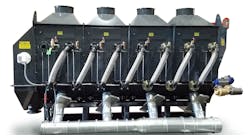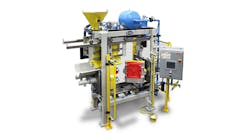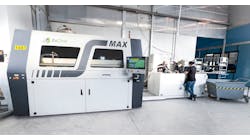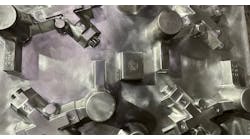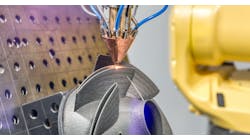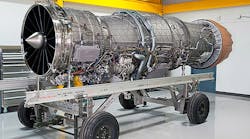Clinkenbeard, a Rockford, IL, manufacturer that specializes in precision-machined parts, “rapid castings,” casting patterns, and prototypes, is starting a new operating division producing full-scale mock-ups of mechanical systems. The Mechanical Prototypes division will coordinate designs and machined or cast parts into system prototypes for industrial customers.
The first project completed by Mechanical Prototypes is a full-scale F135 engine training mock-up. The structure is in use now for maintenance training at Eglin Air Force Base, in Florida, where the F-35 program is centered.
“Creating a full size mock-up is much more cost-effective for the customer than producing an entire engine solely for training purposes,” according to Clinkenbeard’s Matt Gustafson, director of innovation.
The F-35 Lightning II Joint Strike Fighter is a family of single-seat, single-engine jets with stealth capability, developed by Lockheed Martin for the U.S. Dept. of Defense, and supplied in three different versions (ground attack, reconnaissance, and air defense missions) to the U.S. Air Force, U.S. Navy, and U.S. Marine Corps, as well as the defense ministries of several allied countries.
While the F-35 program has been in development for more than a decade, the first jets to enter service will be delivered this year to the USAF and USMC.
Each jet is powered by a Pratt & Whitney F135 afterburning turbofan engine. Clinkenbeard reportedly built seven previous mock-ups of the F135 for the F-35 program over the past 10 years.
The latest model took 15 months to complete, from start to finish Clinkenbeard indicated, involving several development phases and manufacturing partners, including Tri Aerospace, Mica Tool and Atlantic Precision. All three are affiliates of Clinkenbeard, which is part of the Model 2 Machine Group.
The project also involved numerous inspections by military partners, culminating in final acceptance testing at Clinkenbeard in Rockford, where representatives of the USAF, USN, USMC, U.K.’s Royal Air Force, and Royal Netherlands Air Force, onsite for the occasion.
“By combining engineered and machined prototypes with available production parts, we were able to replicate an entire engine assembly that allows mechanics to simulate actual maintenance tasks and manipulate the modular components of the engine,” Gustafson said.




